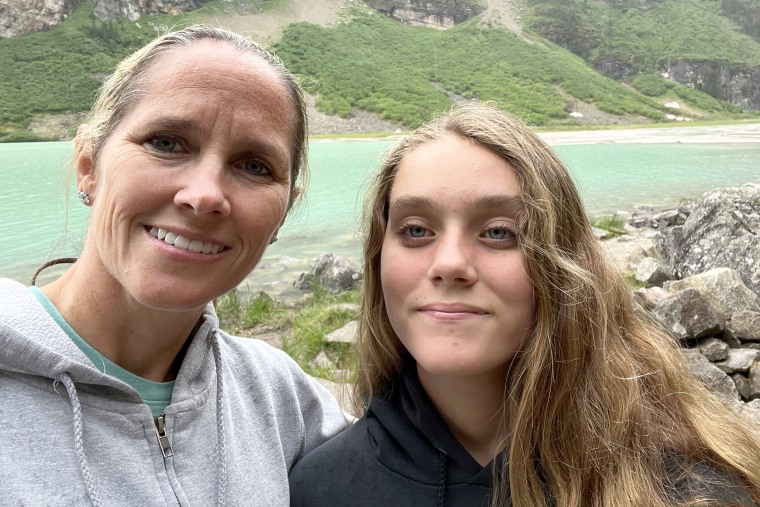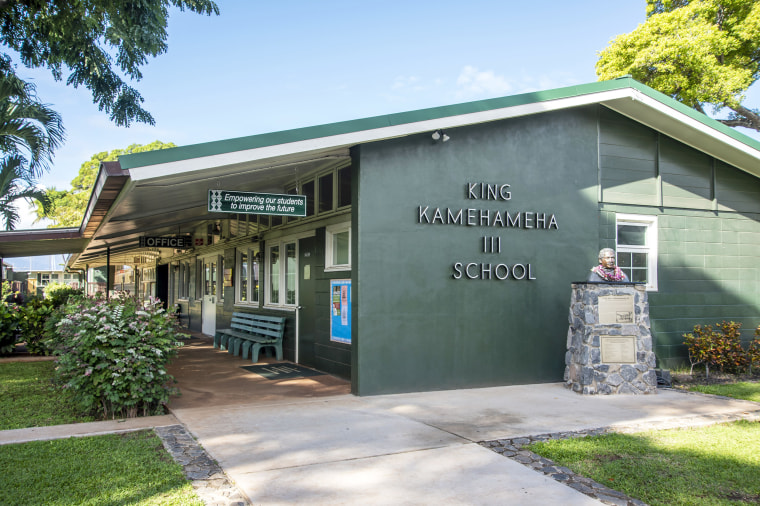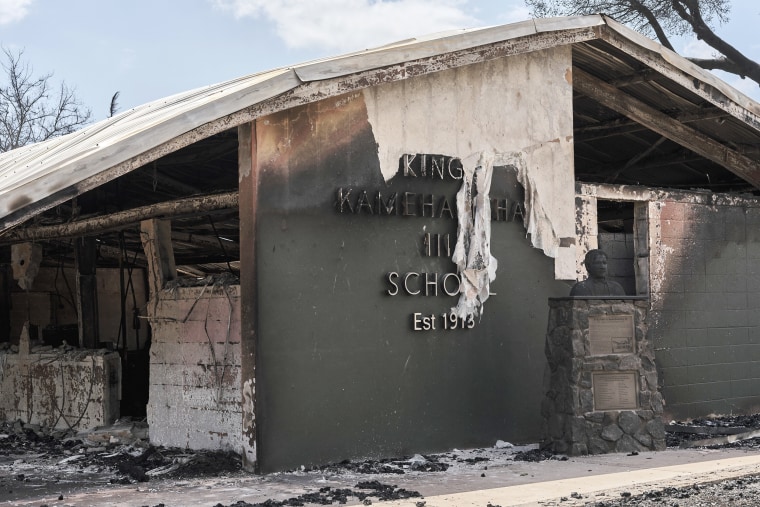Two days after she watched fires consume Lahaina, first-grade teacher Mindi Cherry stood in the ashes of her classroom. King Kamehameha III Elementary School, where she had taught for 13 years, had burned to the ground, only its aluminum roof left behind.
As a teacher, she feels helpless. She doesn’t even know where most of her students are right now. And as a Lahaina resident and mom of a seventh grader, she says she’s also in limbo.
“She can’t go to school,” Cherry, 46, told NBC News. “She’s already lost her home.”
As September approaches, families who lost everything to the fires are trying to regain a sense of normalcy. A big part of that is getting their kids back in school, and so far, they say their options are limited.
There’s state-backed online classes, but many families say they can’t afford to replace the computers that burned in the fires. Parents can enroll their kids in school on the other side of the island, but many don’t have cars or even an address they can put down when registering.
Above all, parents and teachers told NBC News, they want their kids close by, surrounded by their friends who experienced the same trauma, and they aren’t ready to leave Lahaina behind. They’re fighting to keep their kids in school there.
“Our children need to be with people that understand what they have gone through and feel the same things that they have gone through,” said Pakalana Phillips, a Native Hawaiian resident of Lahaina who lost her home in the fire. “Once you’ve lost the people that are native to the land that have been living there for generations, you lose that heart and soul that makes Lahaina so unique.”

Parents and teacher have limited recourse
Schools in Lahaina are all currently closed, along with many of the schools in West Maui. Lāhaināluna High, Lāhainā Intermediate and Princess Nāhi‘ena‘ena Elementary survived the flames and are currently being assessed.
“We are awaiting results of environmental testing to be sure that the air, water and soil are safe so that we may return to campus,” said Derek Inoshita, communications specialist with Hawaii Public Schools. “The King Kamehameha III Elementary campus was damaged beyond repair.”
Inoshita said that the state government will be aiding the district, but that there are currently any plans to rebuild or federal aid is still up in the air.
Schools in central and south Maui have been accepting students from Lahaina and other west side towns affected by the fires. Many are reaching capacity, according to a release on Wednesday. But even with bus options being offered by the state, parents are worried about the emotional toll of letting their kids make the journey.
“They would have to drive through and see all of the ashes,” Cherry said.
Students and teachers who don’t want to leave Lahaina are pushing for other options, including using ballrooms of West Maui resorts as temporary satellite campuses. Cherry says she sees that as a far better option than online school, which her daughter is currently enrolled in.
“Even though I’m going to be displaced and living in Wailuku for who knows how long, I would rather teach on the West Side,” she said. “And if the intermediate school opens back up, I would rather have my kid go there than stare at a screen all day.”
Inoshita said the district is weighing such options.
Though her temporary housing is east of Lahaina, Cherry says her daughter wouldn’t thrive in a new school after all she’s been through.
“I’m not going to put her with people she doesn’t know, and say, ‘OK, figure it out,’” she said. “She would shut down.”

Locals want to be consulted
For lower-income immigrant families in Maui, information about where to get help or how to enroll their kids in school is inherently harder to access, says Maui-based immigration attorney Kevin Block. Many of his clients are scared to even let their kids out of their sight.
“People are in phase one, they’re still trying to find each other,” he said. “The air still smells like smoke. Everybody’s just rattled.”
Once the resorts open, tourists come back and work resumes for many in Lahaina, getting their kids to and from a far-away school may be out of the question.
Hawaii Public Schools announced this week that a meeting with West Maui parents and community members is on the books for Aug. 30. But Block wishes teachers and parents were consulted before this point.
“They just feel like they’re not being heard,” he said.
Residents say they’re doing as much as they can to restore their schools and community, but they wish the government was playing a more active role.
Phillips, who lost a multigenerational ancestral home in the fires, says enough has been lost and taken from Lahaina. If the state encourages families to enroll their kids elsewhere, she fears they won’t return.
“The more families you have leaving Lahaina, it’s harder to rebuild,” she said. “Our community are the ones that are reaching out to do that, our government needs to step in. Even if we have to live in tents until we are able to rebuild our homes, there’s an important factor in having the families actually physically be in Lahaina.”

